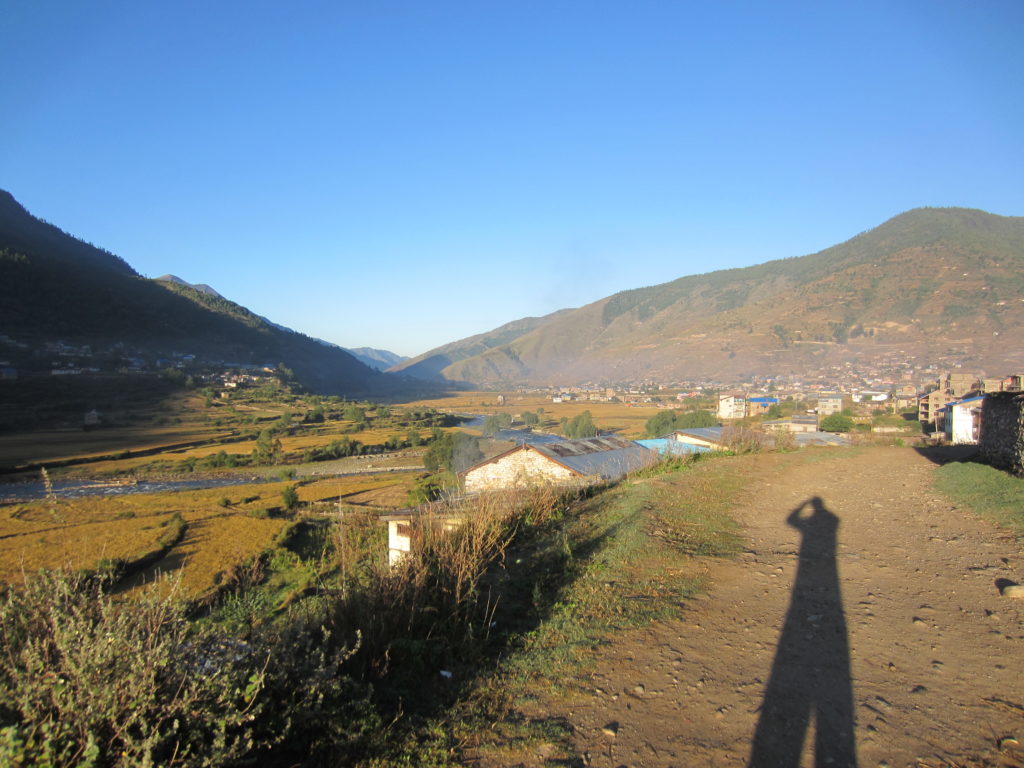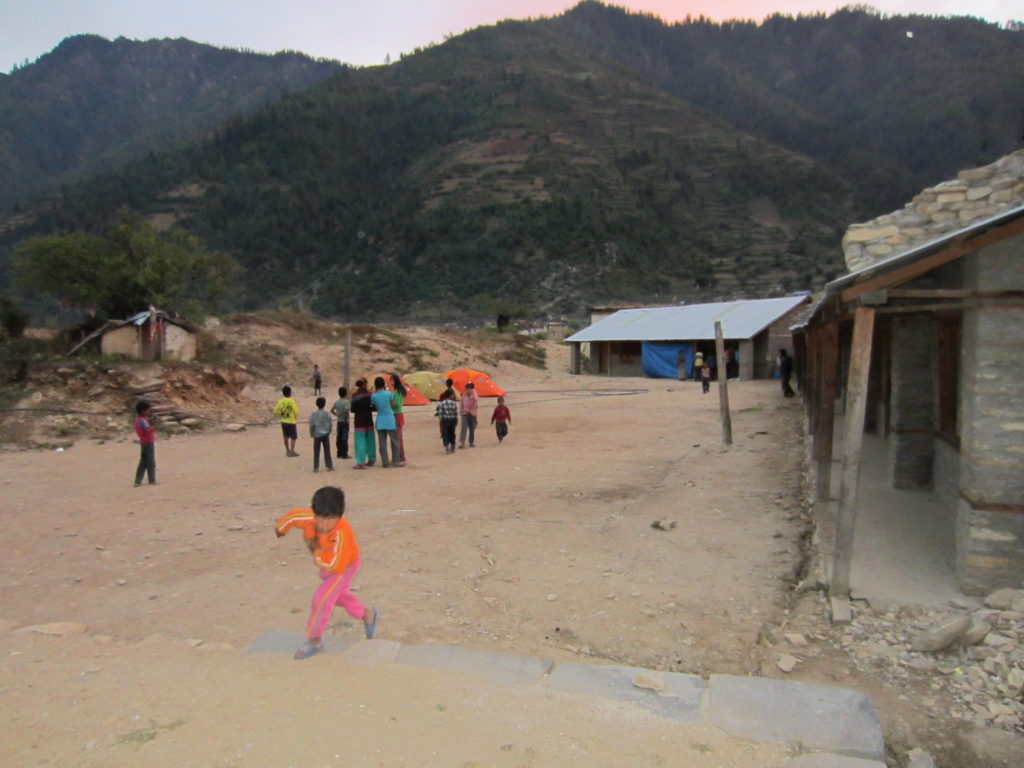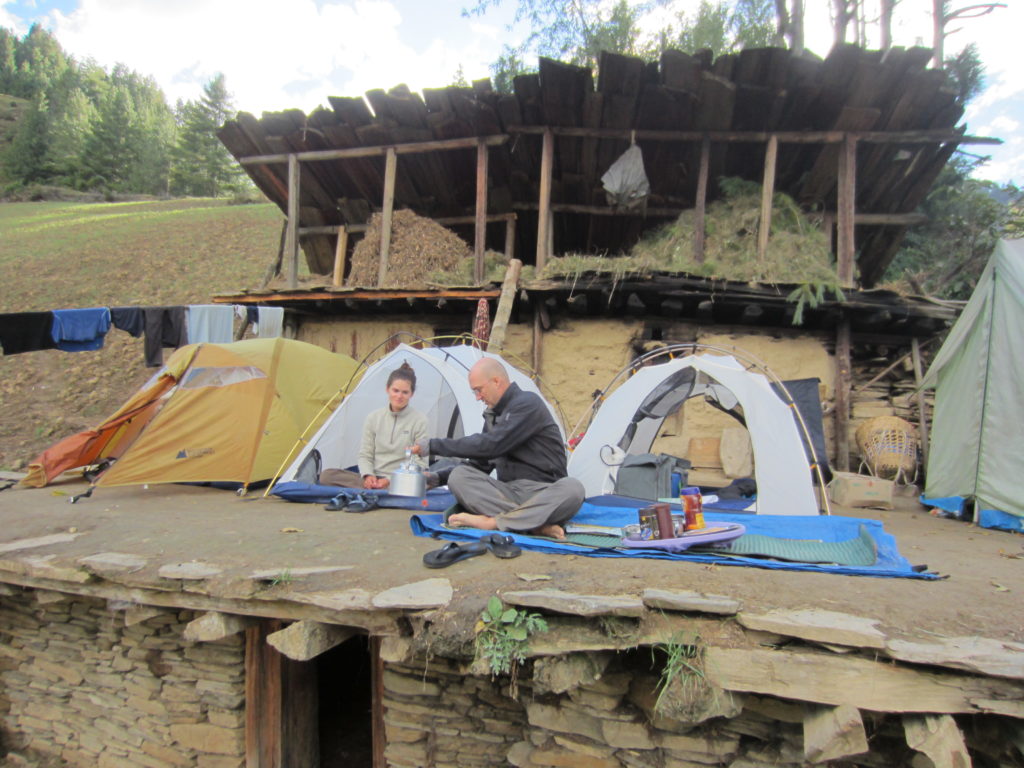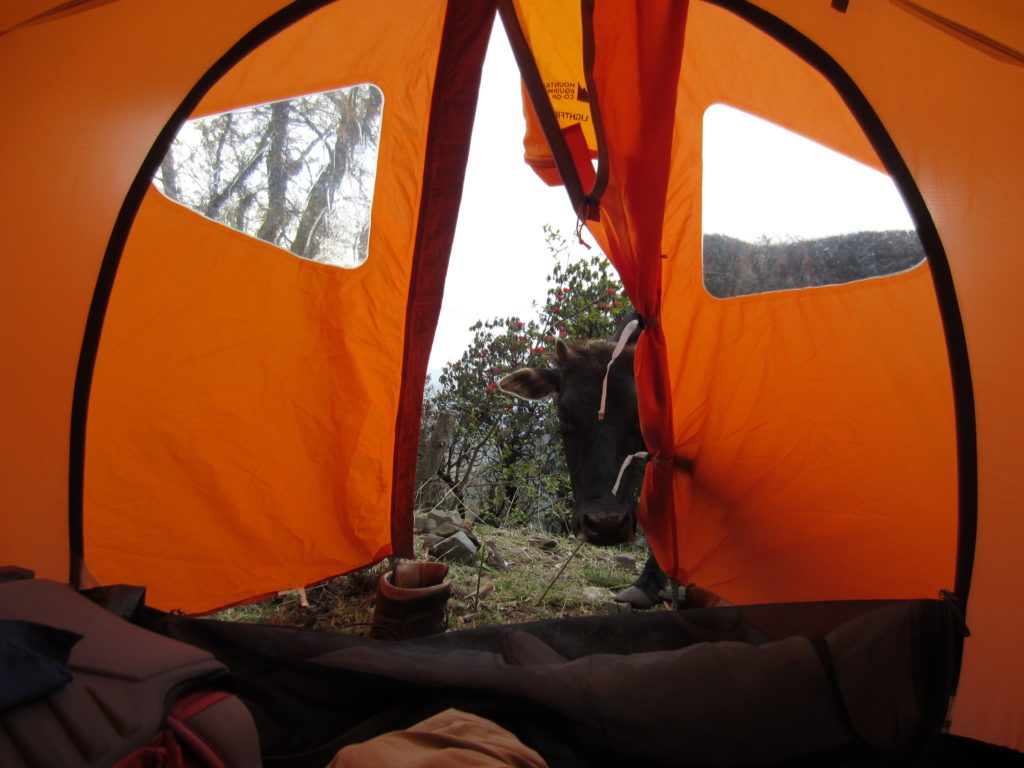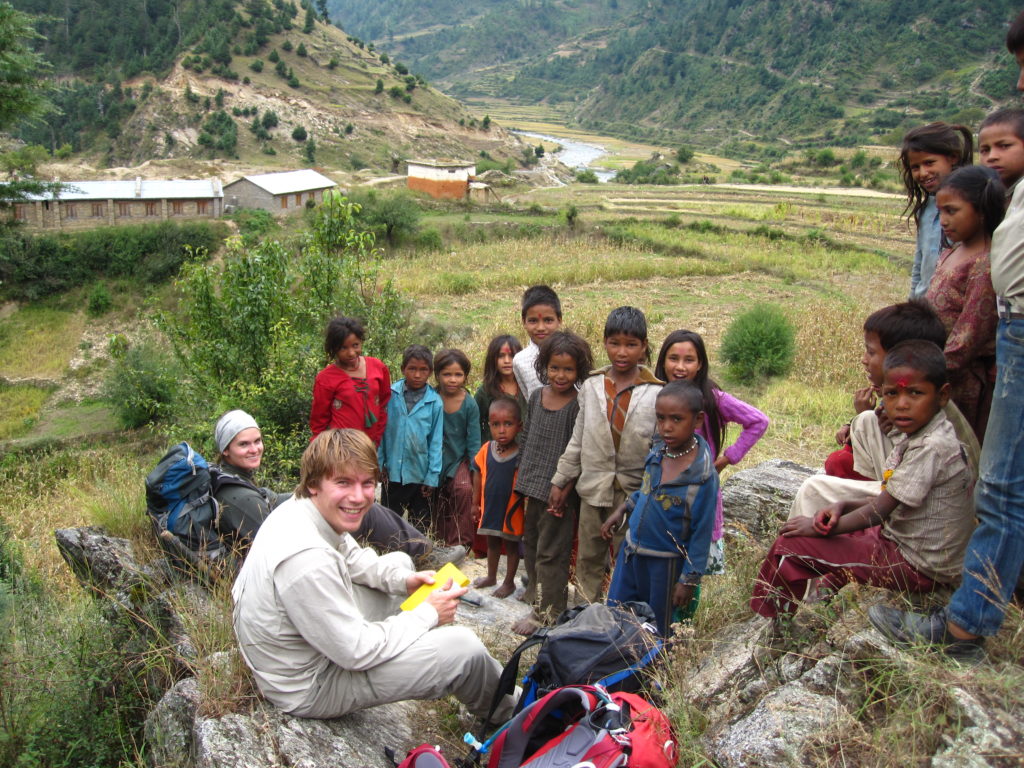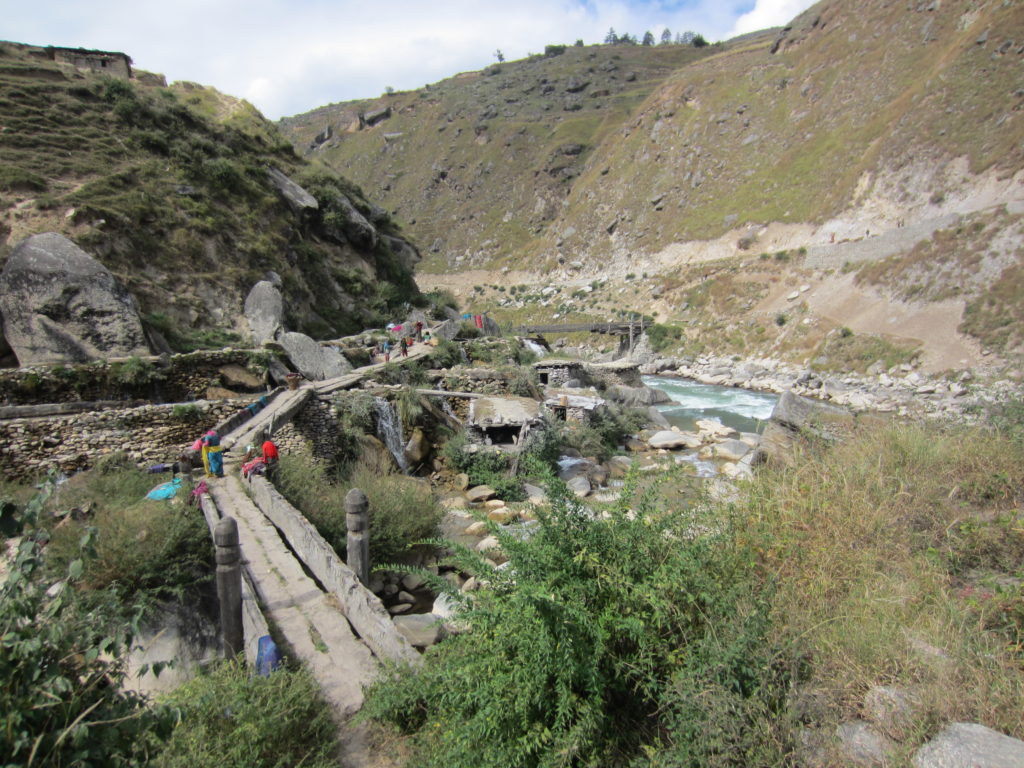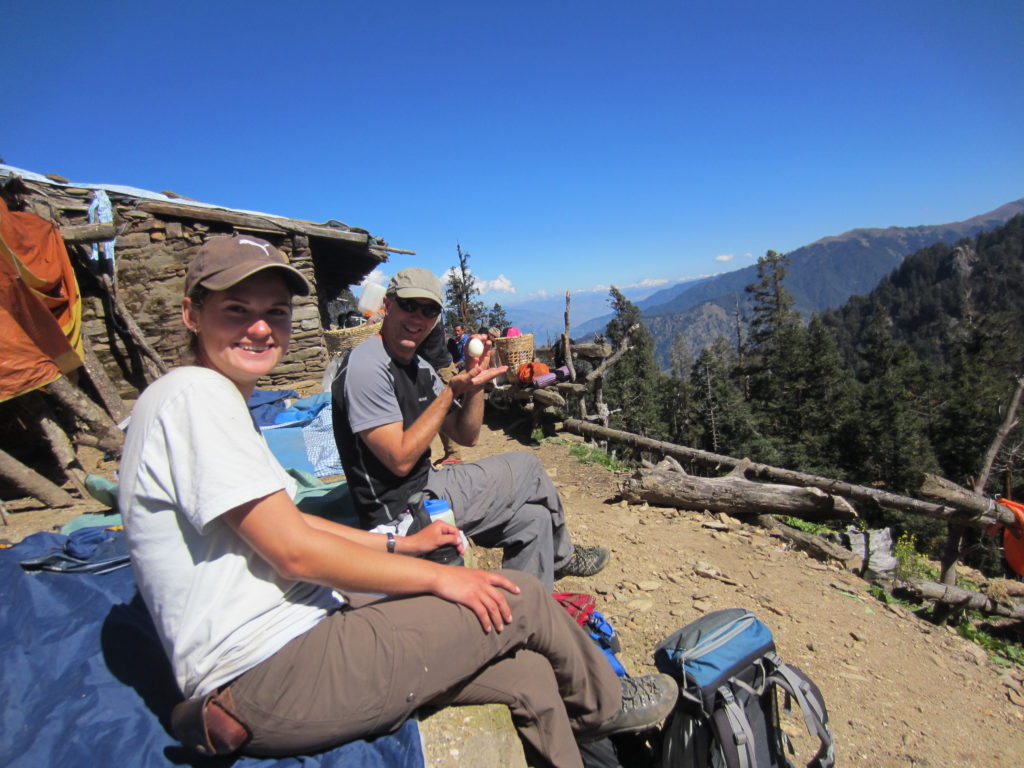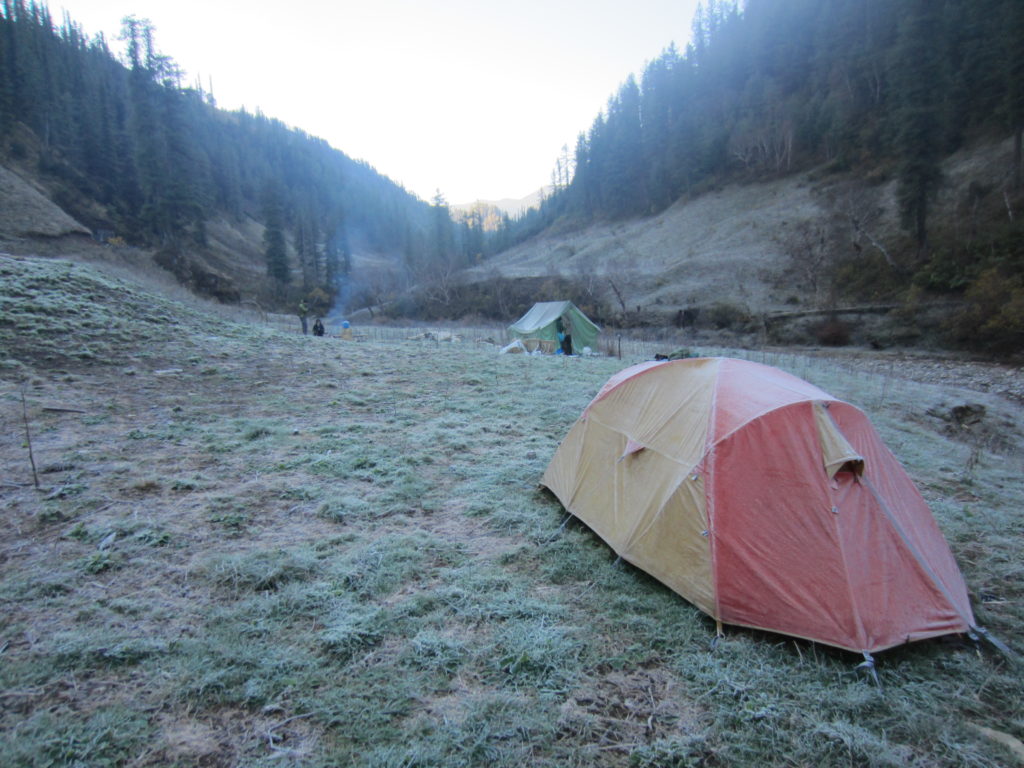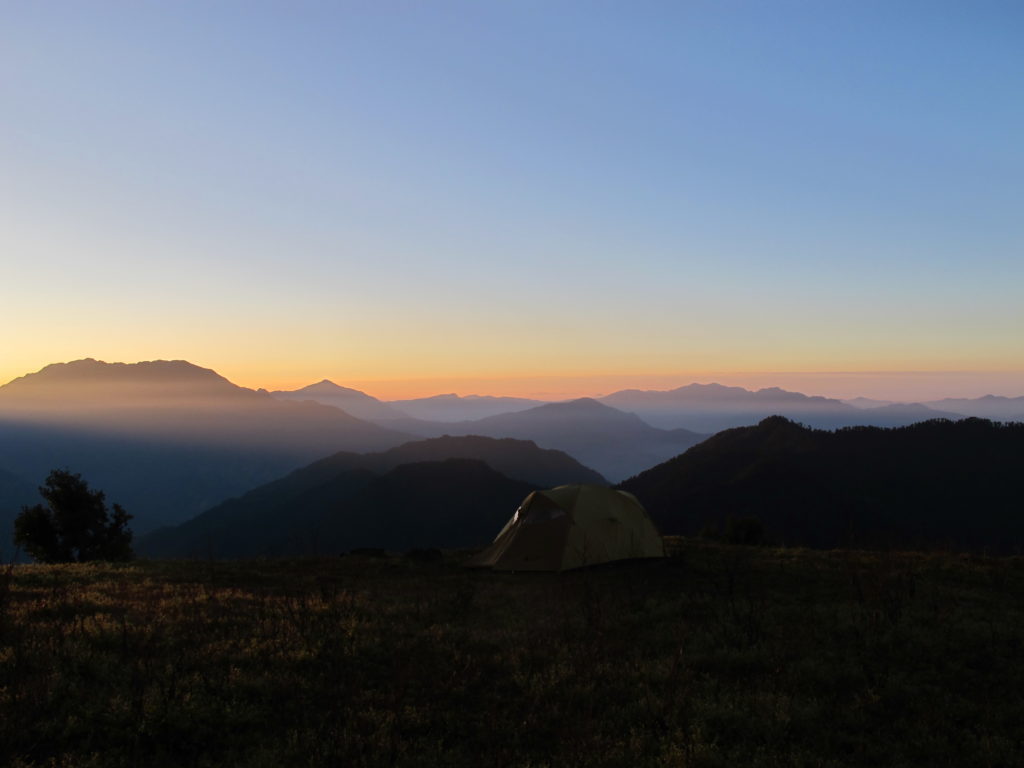Renaud Soucy La Roche is a PhD candidate in the department of Geological Sciences and Geological Engineering at Queen’s University. His research focuses on the tectonometamorphic history of the Nepal Himalaya where he studies the forelandmost exposures of a major shear zone responsible for the exhumation of the Himalayan middle crust. Renaud and co. recently published a paper in Geology about their research in Nepal. You can read more about his research here.
During my first geology class, we spent every Friday morning outside looking at rocks around my hometown. What could be better than enjoying the outdoors while most of your friends are sitting at their desk copying notes from a blackboard? The possibility of studying outside ─ and likely travel to exotic areas! ─ pulled me into further studies in geology. For my PhD, I had the fantastic opportunity to travel to the Himalaya to study the history of the mountain belt. The rocks I am studying were originally deposited on the northern margin of India prior to the collision with Asia, metamorphosed and deformed at great depth, and subsequently brought up to the surface via a system of ductile shear zones and faults. The ductile component of the system, called the South Tibetan detachment, is a normal-sense low-angle detachment that was active during the convergence and juxtaposed high grade metamorphic rocks with overlying non-metamorphosed marine sedimentary rocks such as those exposed at the summit of Mt. Everest. Because the South Tibetan detachment is a key structure for the exhumation of the Himalayan metamorphic core, it has intrigued geologists since its discovery in the ‘80s.
In the western Nepal foreland, the Himalayan metamorphic core is exposed in a series of discontinuous klippen where the South Tibetan detachment is only locally recognized. Klippen are erosional remnants of a thrust sheet, in this case preserved in the core of large-scale synclinal folds south of the main exposure of the high-metamorphic grade thrust sheet. The goal of my first field season in fall 2013 was to investigate the metamorphic rocks exposed in one of these klippen, the Karnali klippe, and to hunt for an exposure of the South Tibetan detachment.
The adventure started with a 30+ hour long flight to Kathmandu where I arrived completely exhausted and suffering from jet lag. My advisor, Laurent Godin, nonetheless dragged me around the market, Durbar Square and other cultural sites to keep me awake and get used to the time difference.
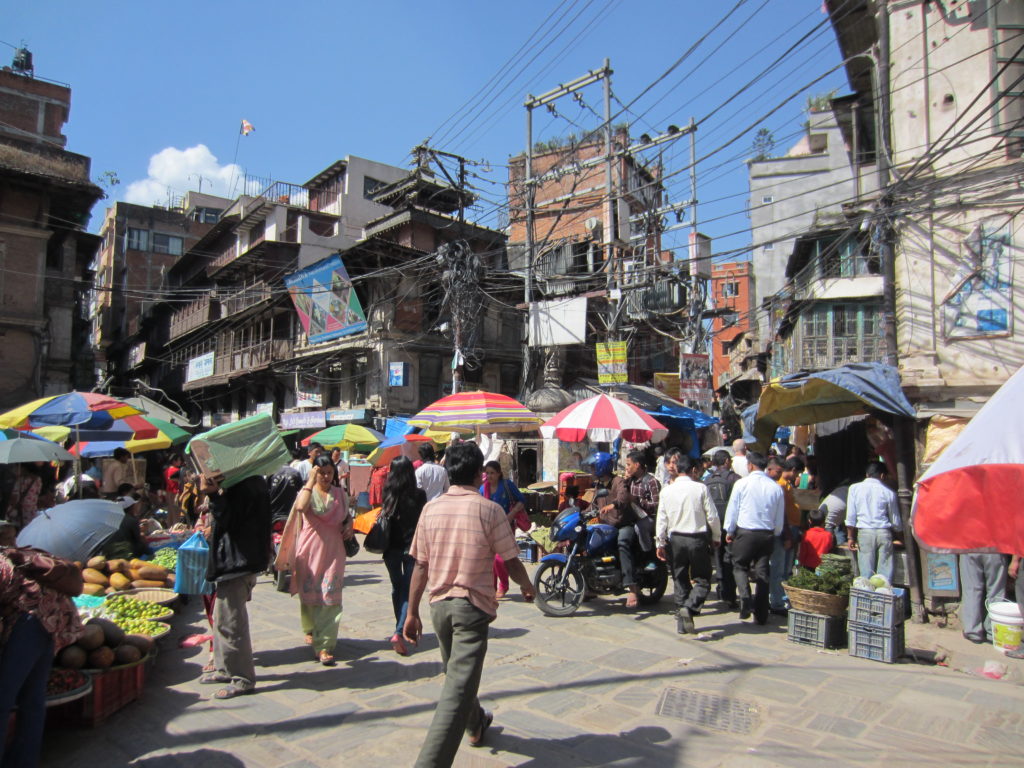
Photo 1. The first thing that comes to my mind when I think about Kathmandu is “sensory-overload”. Of course, a picture does not do justice to the feeling of walking around Kathmandu. I could add sound and movement with a video, but you would still be missing the odors and the feeling of motorcycles and cars touching the hair on your arms as they drive next to you… That sure kept me awake when I first got there!
After a couple days organizing the equipment and finalizing planning, we took a flight to Nepalgunj in the Gangetic plains of western Nepal at the border with India. It was warm and humid, and at this point I really wanted to go north and finally see the mountains! Luckily, the weather was nice the next day and we were able to fly out to Jumla, where two fellow students were waiting for us with our guide and support crew. The view of the mountains rising from around us as we flew north was just astonishing! Once we arrived in Jumla, even though we could only see snowy peaks far in the background, I was just happy to enjoy the silence and some cooler weather.
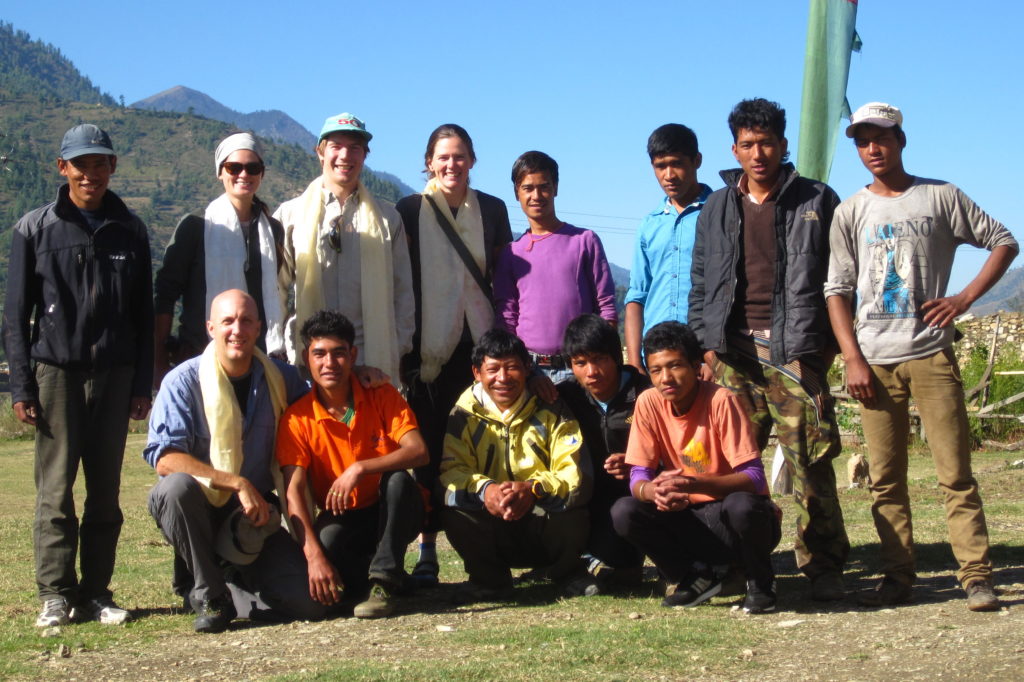
Photo 2. Group picture in Jumla with our guide, Dawa Tamang (yellow jacket), and our support crew, without whom this trip would not have been possible. Photo courtesy of Laurent Godin.
From Jumla, we hiked ~180 km south across the Karnali klippe and saw some amazing rocks! A typical day usually starts with a warm cup of tea served at our tent door followed by breakfast (typically eggs and something else, accompanied by instant coffee ─ yum!). Then, we pack our tents and gear and go for a hike. As we walk, we stop at outcrops, describe the rocks, measure structural features, take GPS coordinates, and sometimes we take the hammer out to collect a sample. At the end of the day, we catch up with the crew and set up a new camp wherever is convenient.
No >8000 m giants can be found in western Nepal, so the area is rarely depicted on Nepal post-cards and is often overlooked by tourists. Even though we were traveling on gentle hills at 3000-4000 m (easy for Nepali standards!), the landscape was spectacular! Since we were completely off the well-beaten tourist tracks, the locals were genuinely curious about us, and we often worked with a crew of 10-20 kids following us closely.
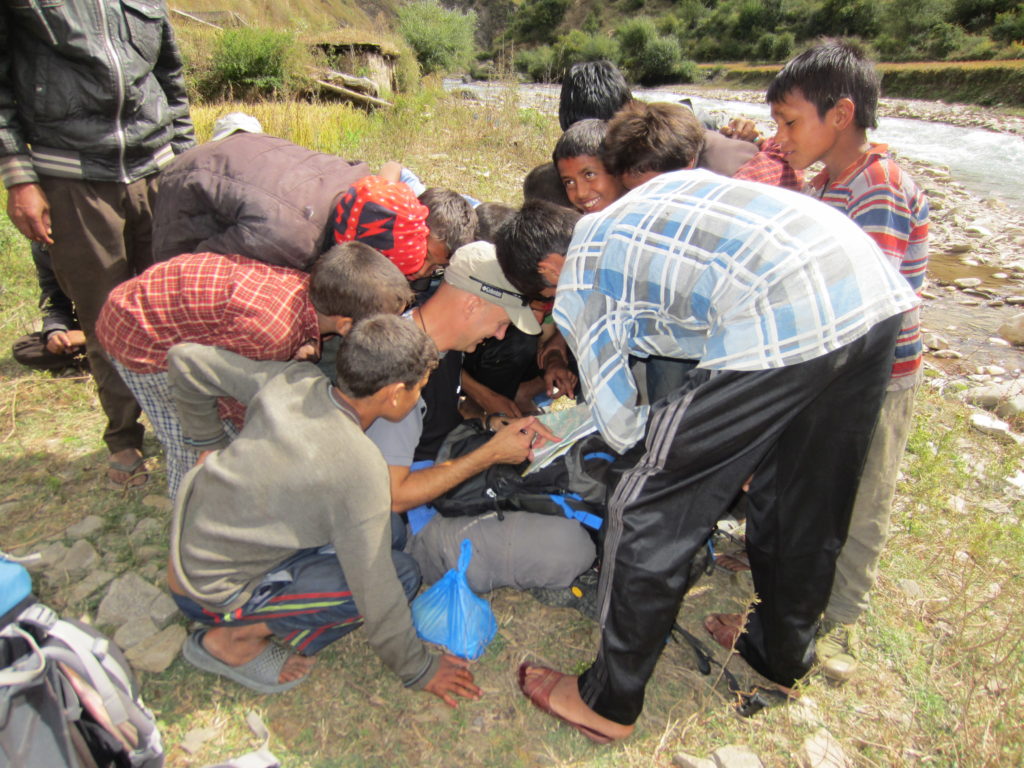
Photo 8. Laurent discussing the plan with our guide, while the local kids were doing their best to provide advice on the trail network!
After a few days of hiking on the north flank of the klippe in metamorphic rocks (and filling our pockets with bright blue kyanite crystals found in sand in the trail), we crossed the contact with the overlying sedimentary rocks. As we had hoped, the contact is a ductile top-to-the-northeast shear zone that can be correlated with the South Tibetan detachment. We then continued our transect towards Dailekh to verify that the same shear zone was also present on the south flank of the klippe.
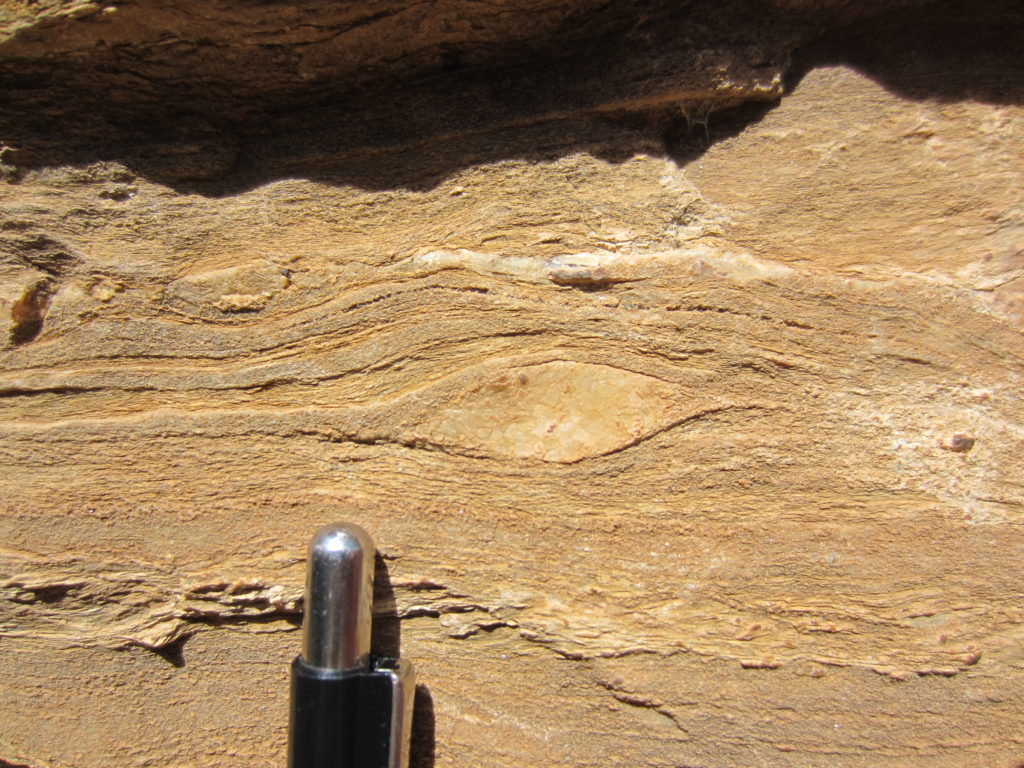
Photo 9: σ-porphyroclast from the South Tibetan detachment indicating a top-to-the-northeast sense of shear (northeast is to the right).
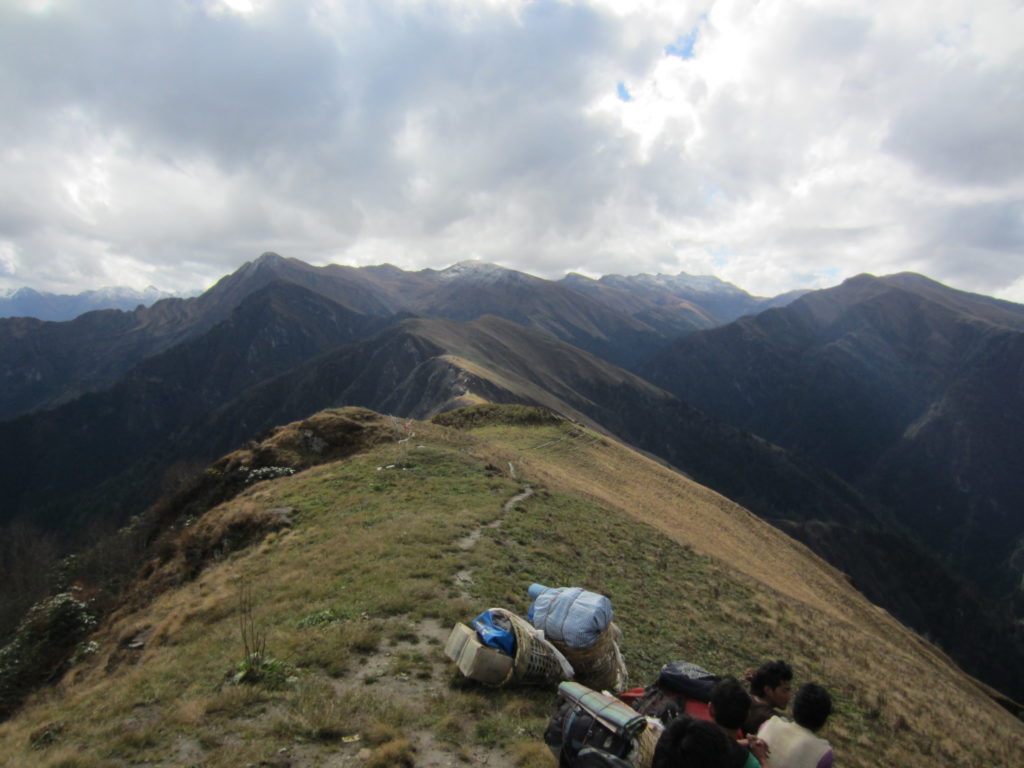
Photo 10: Taking a break at 4000 m, our high point in the center of the Karnali klippe. A snowstorm hit the nearby mountains overnight; we were lucky that our trail remained dry and that we could safely cross the pass. Rocks exposed here are part of the Tethyan sedimentary sequence that is in tectonic contact with the Himalayan metamorphic core along the South Tibetan detachment. They locally preserve north-verging folds such as those present left of the picture.
We brought back samples from the shear zone in order to characterize it microstructurally and more importantly, to determine the timing of deformation. Though the South Tibetan detachment has been studied by many research groups over the last decades, the age of initiation of the structure is still poorly constrained because conventional ways of dating deformation (e.g. dating deformed or cross-cutting intrusions, thermochronology, etc.) usually provide syn-shearing or post-shearing age constraints. To overcome this problem, we used cutting edge in-situ dating of monazite, a U- and Th-bearing rare earth element phosphate mineral, combined with trace element analysis. Dating monazite in its structural context allowed us to identify and date pre- and syn-shearing monazite, i.e. monazite that crystallized prior to and during deformation along the South Tibetan detachment. We showed that deformation initiated during the early Oligocene (~29-30 Ma), a few million years earlier than previously thought, and published our results in Geology (Soucy La Roche et al., 2016).
While I also enjoy the lab part of geological research, which is essential for understanding the geological complexities of any mountain belt, nothing beats the incredible scenery, fantastic people and wonderful cultures that I experienced during my field work!
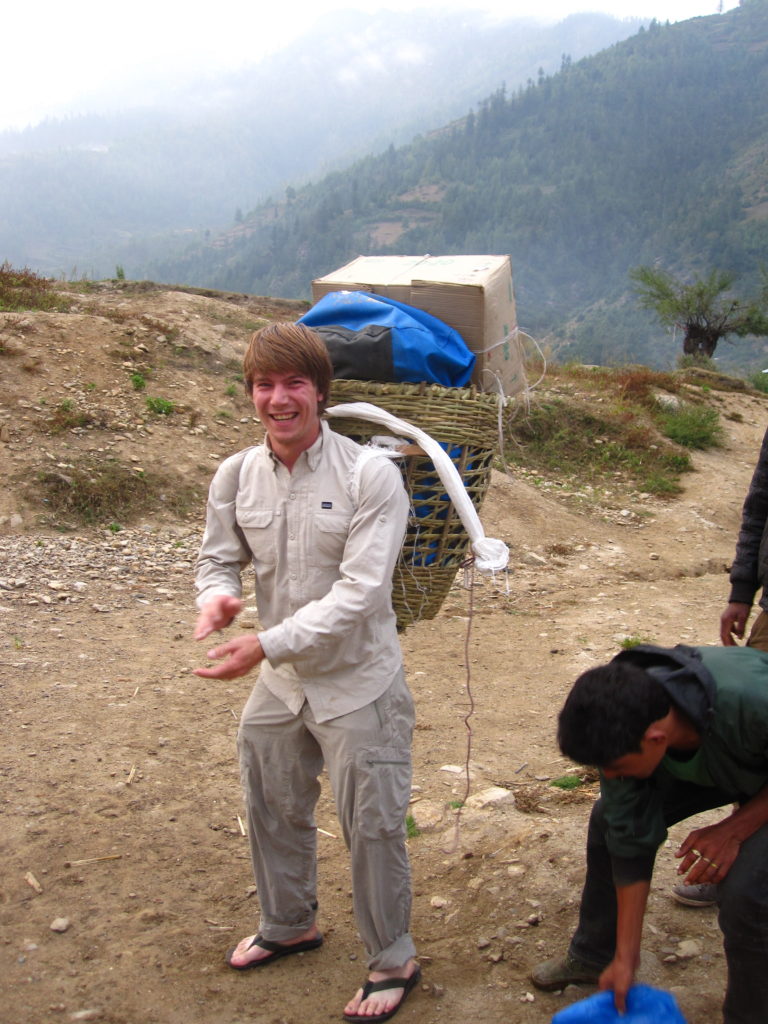
Photo 13: I tried to carry one of the dokos that the crew use to move our camp, but I couldn’t manage to use the head strap which carries most of the weight. Flip-flops are also part of some porters gear but that sure does not seem to slow them down when they run next to you on rugged terrain.
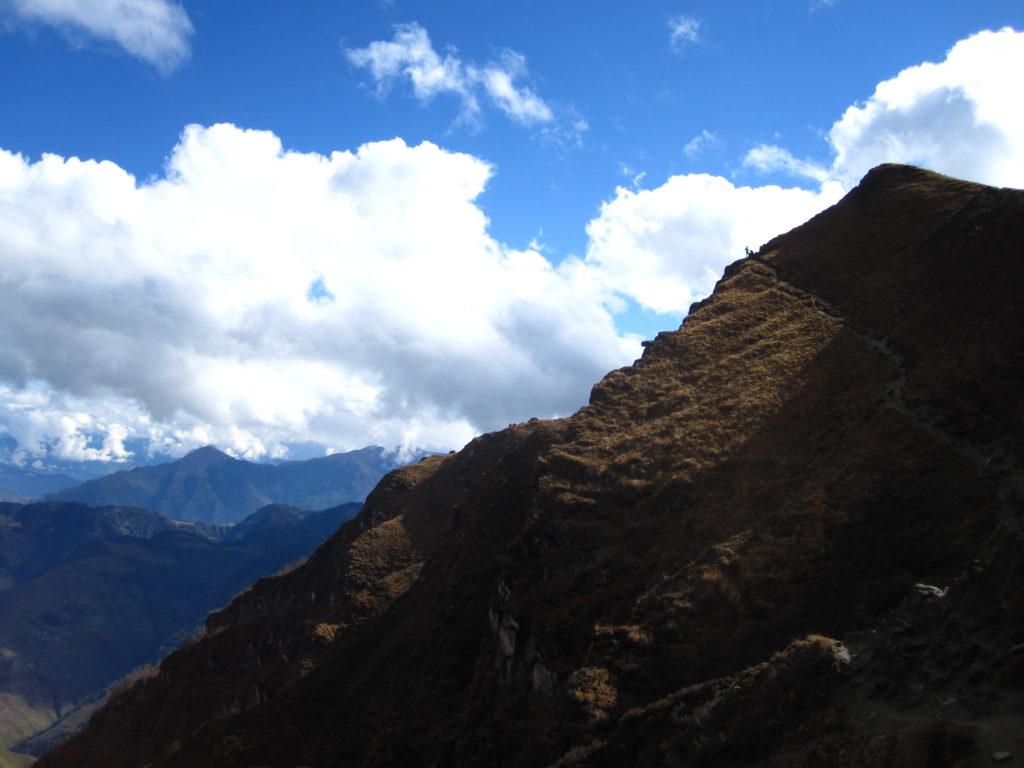
Photo 16: Collecting a rock sample near the highest structural levels of the Karnali klippe. Photo courtesy of Laurent Godin.
![]() This work is licensed under a Creative Commons Attribution-NonCommercial-ShareAlike 4.0 International License.
This work is licensed under a Creative Commons Attribution-NonCommercial-ShareAlike 4.0 International License.

